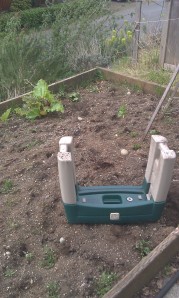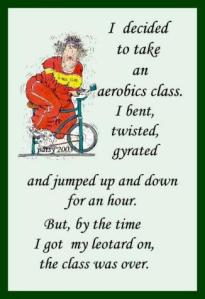Gentle Reader,
If I could tell you why some days I wake up with no pain whatsoever– like today– and catalog the food I ate yesterday, the stretches I made, the delicious sleep, the supplements, the aerobic activity—why surely I would have a recipe for a pain free life. I cannot. I cross country skied on Wednesday; stayed up too late fussing over numbers; ate on the run, albeit extra nutritious homemade vegetable-drawer soup; got tied up in knots over the traffic delays. You know the drill. I took no herbal pain pills today and no Aleve. Instead of analyzing the good things in life that seem to happen randomly, I suggest robust all out celebration and thanksgiving.
I will offer you some spicy advice that came to me from a good friend who faithfully reads these pages and a few others from the web which she passes on to me when relevant. I especially appreciated her reprint from NaturalNews. Since I harvested stinging nettles on my walk Tuesday, being careful to wear gardening gloves, I am eager to eat them and see what they do for me. See the article below for details. Stinging nettles are abundant in the northwest right now, small plants with tender leaves. All the sting goes away with cooking. If you try it, let me know how it goes. It’s inexpensive to try these natural remedies from the kitchen cupboard, way-side and grocery store.
Relieve arthritis and joint pain with home remedies
(NaturalNews) Homemade remedies for arthritis, gout and other joint pain are never farther away than the kitchen cupboard or the refrigerator. Joint disease is the result of various causes ranging from aging, to over-use and autoimmune diseases that attack joints and surrounding tissue. Pharmaceutical companies have designer drugs that reduce inflammation to help relieve pain and often cause significant side effects. The ingredients for homemade remedies can be purchased at grocery and health food stores and many may already be stocked in your pantry, offering significant savings over costly pharmaceutical drugs.
Anti-Inflammatory triad
On their own, turmeric, ginger and bromelain work as effective anti-inflammatory agents. Each works to relieve pain, stiffness and swelling. In combination, they provide a powerhouse of natural medicine. The three substances are synergistic to one another, each boosting the other’s effectiveness…
Stinging nettles
Homemade remedies from stinging nettles are numerous. A traditional herbal treatment, stinging nettles are used to relieve symptoms of joint pain, arthritis and gout. A tea can be made from the dried herb or the fresh leaves. Use caution and wear gloves if harvesting fresh nettles. As their name implies, the little hairs on the plant can cause serious skin reactions including hives and other painful outbreaks. These are neutralized when heated into tea or when the plant is dried. The tea can be consumed hot or cold or used as a topical soak for painful joints.
Cayenne pepper
Found in most spice cupboards and known for its spicy-hot taste, cayenne makes an excellent topical ointment that relieves joint pain. Capsaicin, the active ingredient in cayenne pepper, tricks the brain by causing local irritation to skin where signals then travel along nerve pathways, distracting the brain from the true source of pain. In time, repeated topical applications of cayenne pepper will reduce arthritis pain significantly. To make topical homemade remedies, mix 2 tablespoons of cayenne pepper with 1/2 cup of cocoa butter, lanolin or coconut oil. Apply it directly to the sore joint. Alternatively, mix 1/2 teaspoon of cayenne pepper with 1 cup of apple cider vinegar and add to a foot bath with warm water. Soak hands or feet for 20 minutes, then rinse. Cayenne pepper can cause skin irritation. (I have not tried this, so go forward at your own risk.)
Pectin Grape Juice
Homemade remedies made from fruit pectin and grape juice can relieve joint pain, and reduce swelling and stiffness. Pectin is found in the cells of many plants and acts as a thickener in preparations such as jellies. Grape juice is loaded with antioxidants, among them, anthocyanins, noted for its effect on reducing inflammation. Pectin regulates the flow of fluids in plant cells and is believed to act to relieve fluid buildup in the joints of arthritis sufferers. The best pectin is found at the health food stores and is free of MSG and other additives. Mix 1/2 cup of juice with 2 tablespoons pectin. Add water if needed and drink twice daily for 6 weeks. Reduce the frequency as symptoms disappear.
Sources for this article include:
DermNetNZ: Capsaicin
http://dermnetnz.org/treatments/capsaicin.html
Holistic Online: Tumeric
http://www.holisticonline.com
Science Daily: Turmeric Prevents Experimental Rheumatoid Arthritis, Bone Loss
http://www.sciencedaily.com/releases/2006/10/061030071152.htm
MotherNature.com: Arthritis and Alternative Medicine
http://www.mothernature.com/Library/bookshelf/Books/42/1.cfm
Joint-Pain.com: Natural Arthritis Treatments
http://www.joint-pain.com/natural-arthritis-treatments.html
The People’s Pharmacy: Pectin for Arthritis Pain
Be Well, Do Well and Keep Moving
Betsy
Betsy Bell’s Health4U
206 933 1889
www.HiHoHealth dot com
www.TiredNoMore dot com











